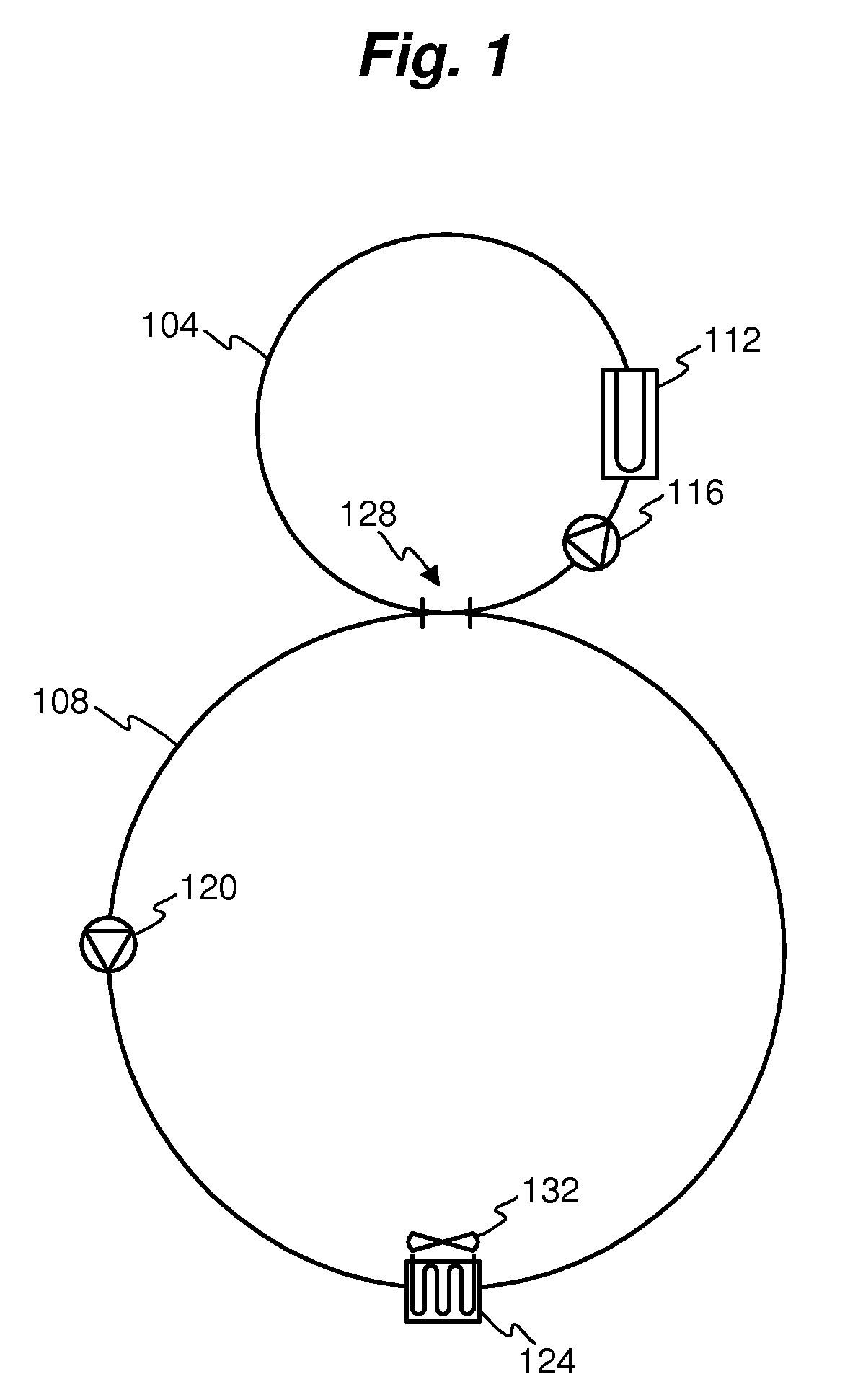Demand flow pumping
a demand flow and pumping technology, applied in the direction of heating types, instruments, static/dynamic balance measurement, etc., can solve the problems of preventing chilled water plants from meeting cooling demands, excessive energy consumption and artificial capacity reduction, etc., to achieve high efficiency of chilled water plants, reduce energy utilization, and reduce energy consumption
- Summary
- Abstract
- Description
- Claims
- Application Information
AI Technical Summary
Benefits of technology
Problems solved by technology
Method used
Image
Examples
Embodiment Construction
[0057]In the following description, numerous specific details are set forth in order to provide a more thorough description of the present invention. It will be apparent, however, to one skilled in the art, that the present invention may be practiced without these specific details. In other instances, well-known features have not been described in detail so as not to obscure the invention.
[0058]Demand Flow, as described herein, refers to methods and apparatus to reduce or eliminate Low Delta T Syndrome and to improve chilled water plant efficiency. Demand Flow may be implemented in retrofit projects for existing chilled water plants as well as new installations or designs of chilled water plants. As used herein, chilled water plant refers to cooling systems utilizing chilled water to provide comfort cooling or chilled water for some process need. Such chilled water plants are typically, but not always, used to cool campuses, industrial complexes, commercial buildings, and the like.
[...
PUM
 Login to View More
Login to View More Abstract
Description
Claims
Application Information
 Login to View More
Login to View More - R&D
- Intellectual Property
- Life Sciences
- Materials
- Tech Scout
- Unparalleled Data Quality
- Higher Quality Content
- 60% Fewer Hallucinations
Browse by: Latest US Patents, China's latest patents, Technical Efficacy Thesaurus, Application Domain, Technology Topic, Popular Technical Reports.
© 2025 PatSnap. All rights reserved.Legal|Privacy policy|Modern Slavery Act Transparency Statement|Sitemap|About US| Contact US: help@patsnap.com



